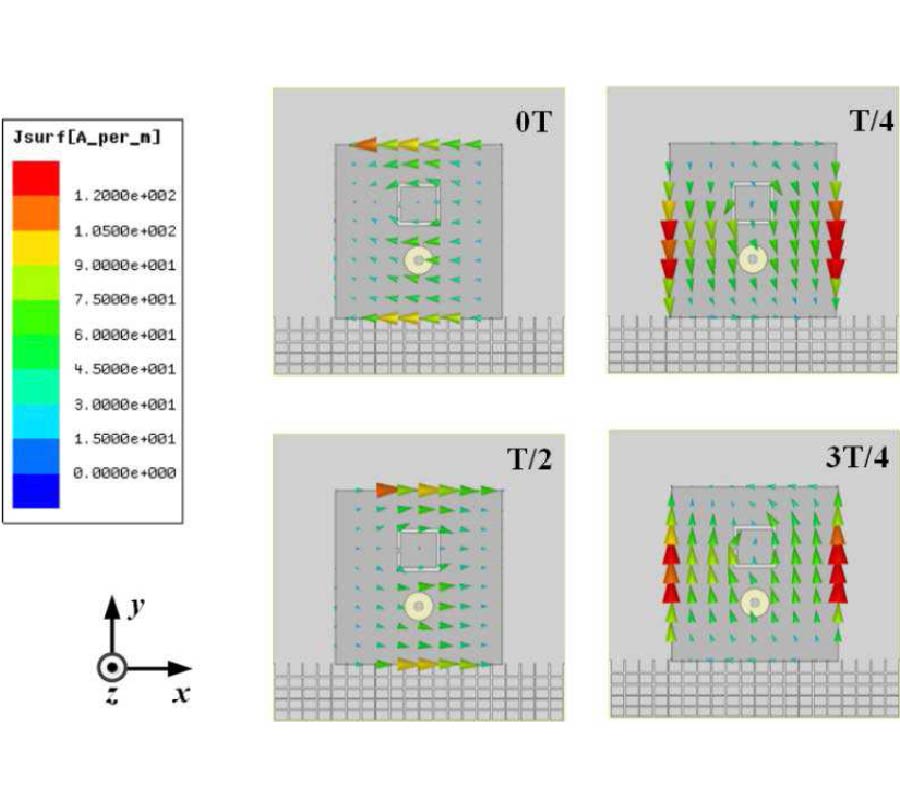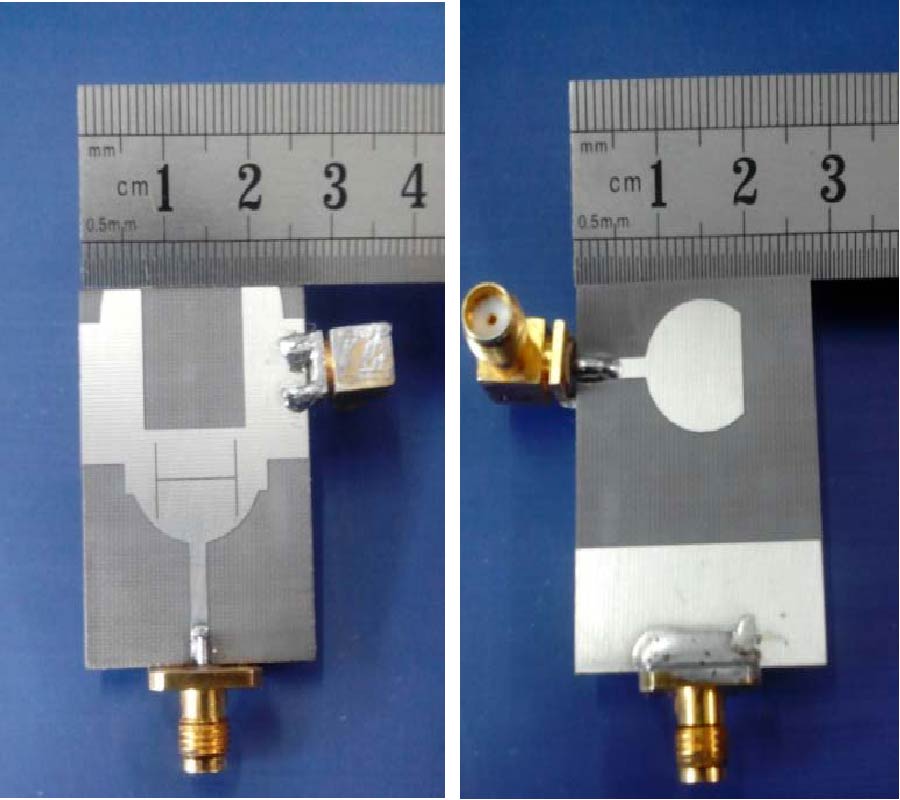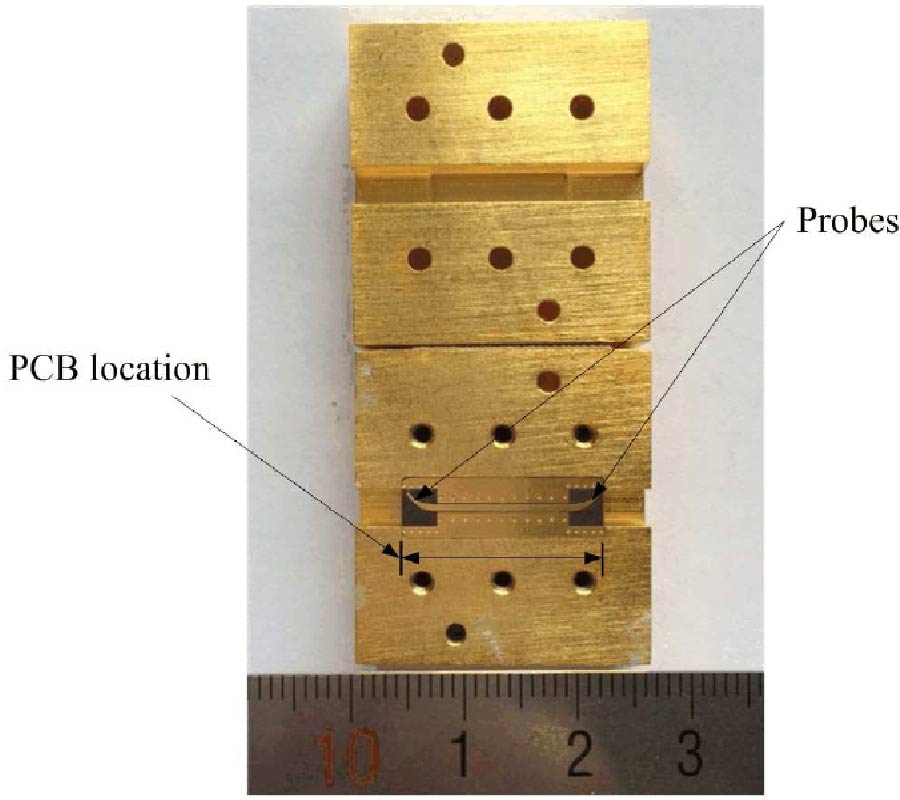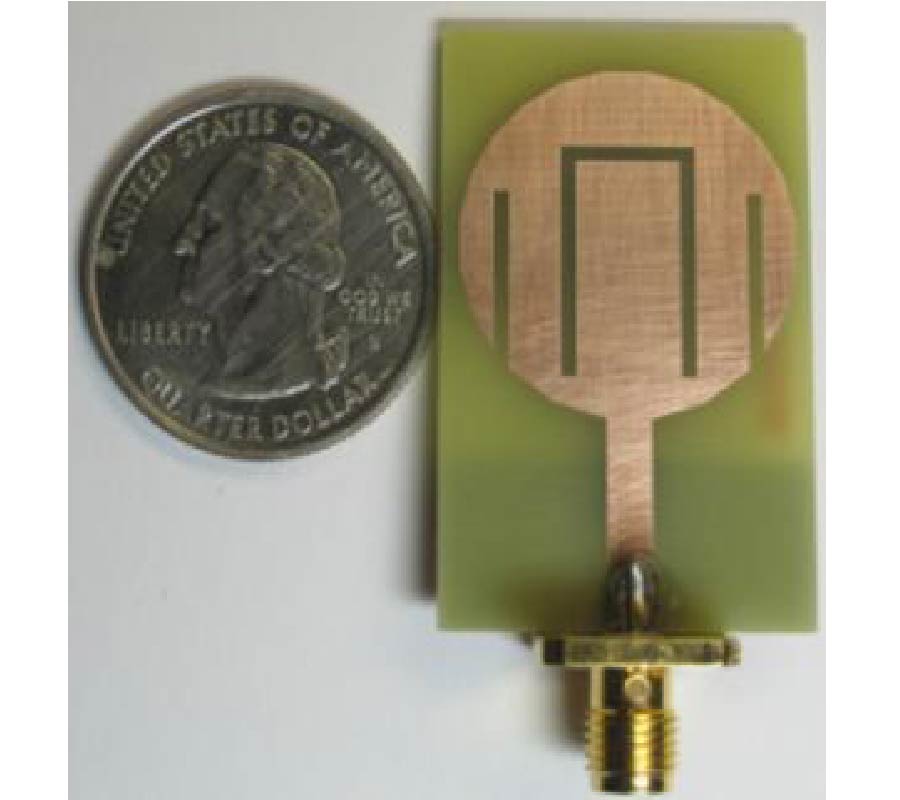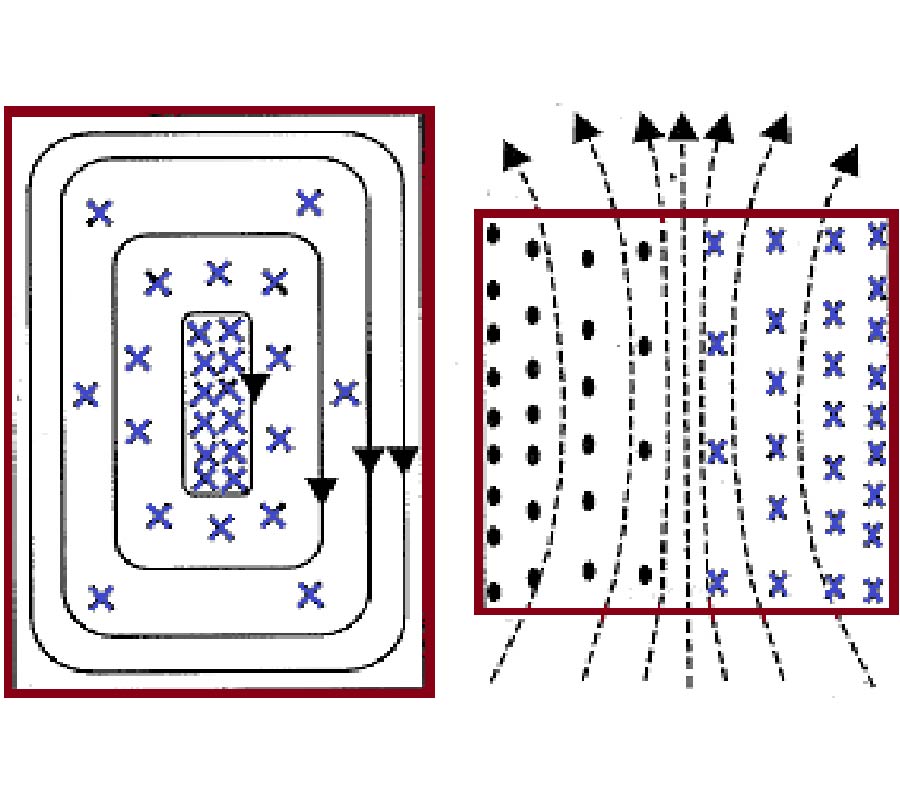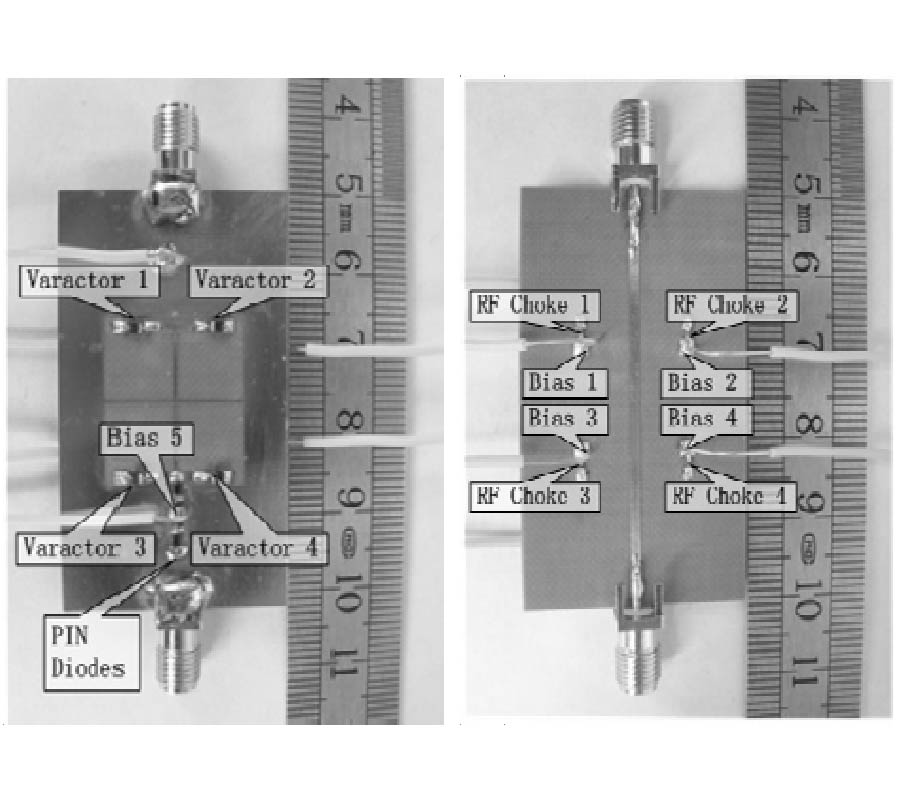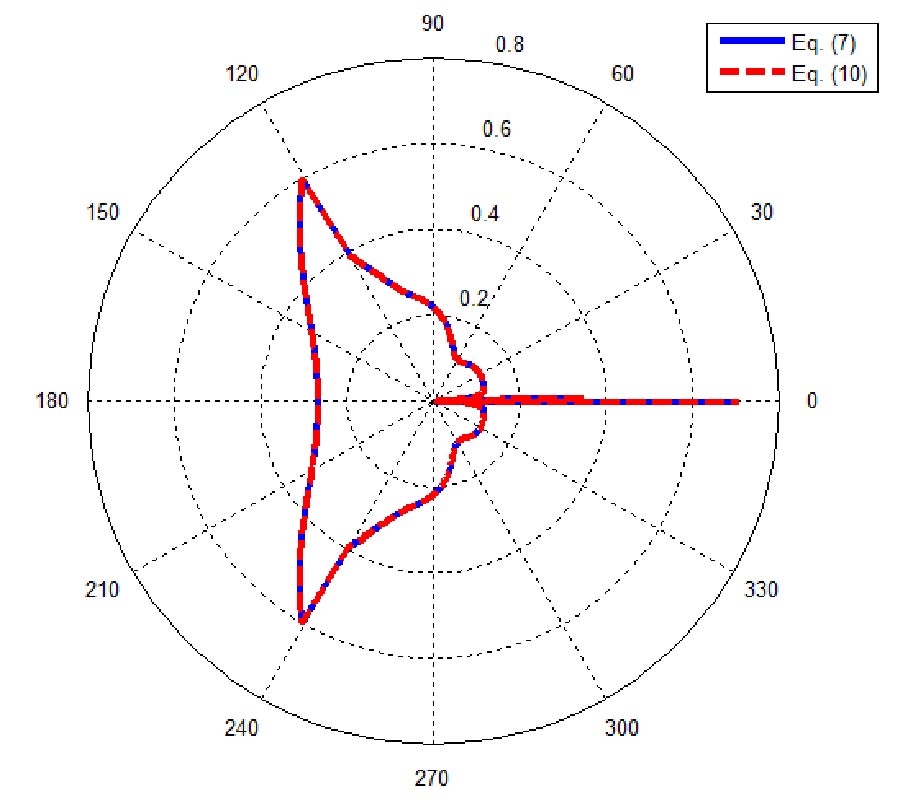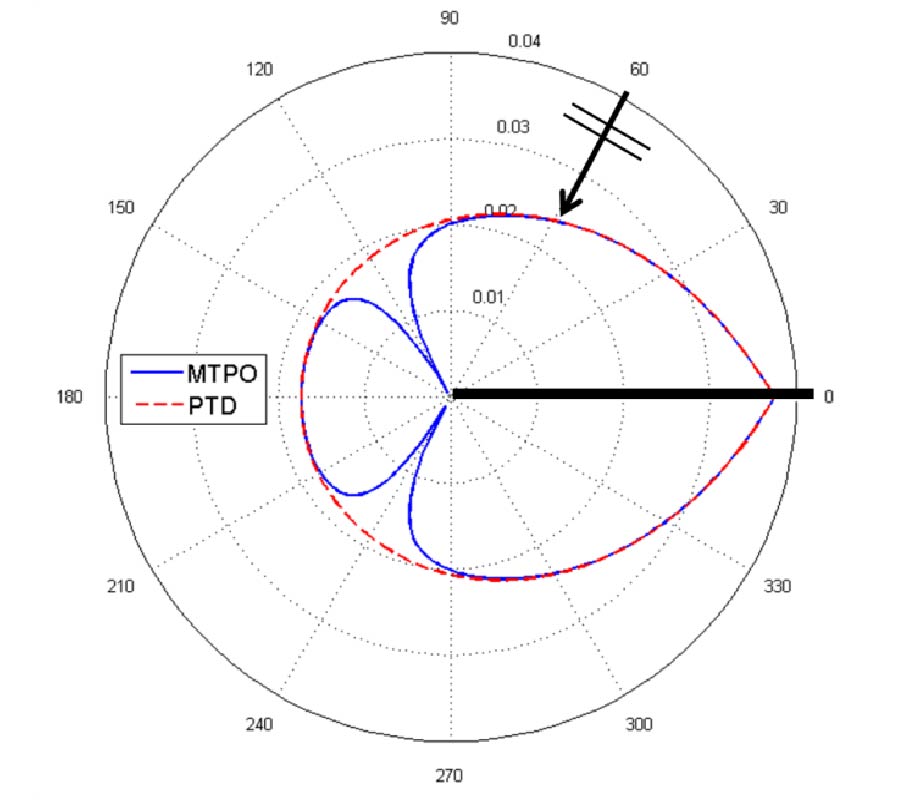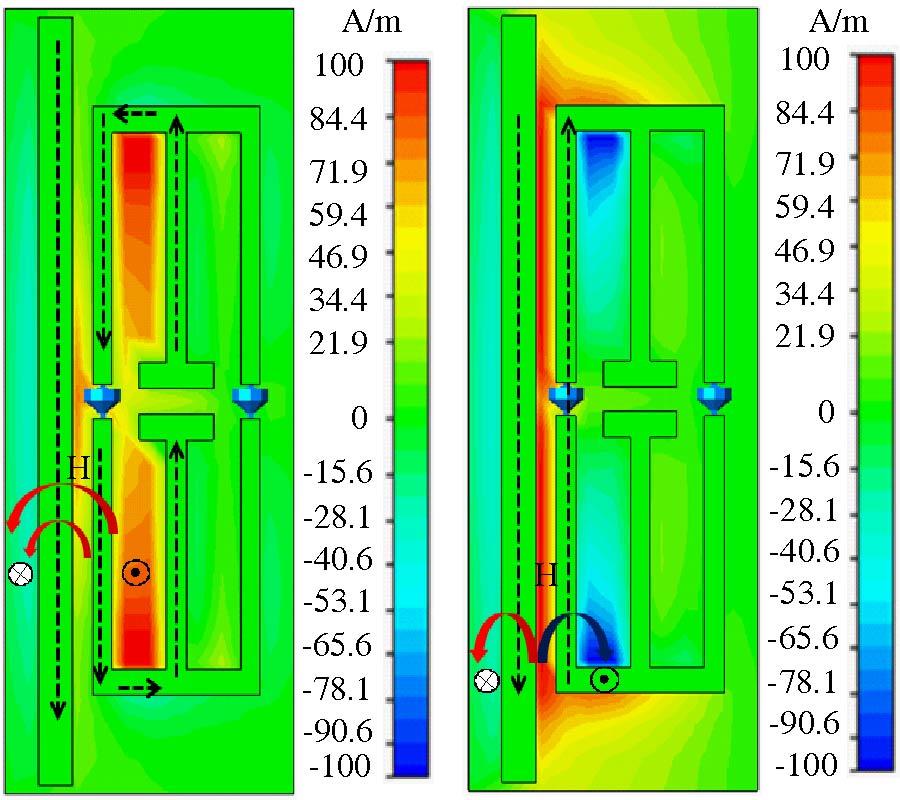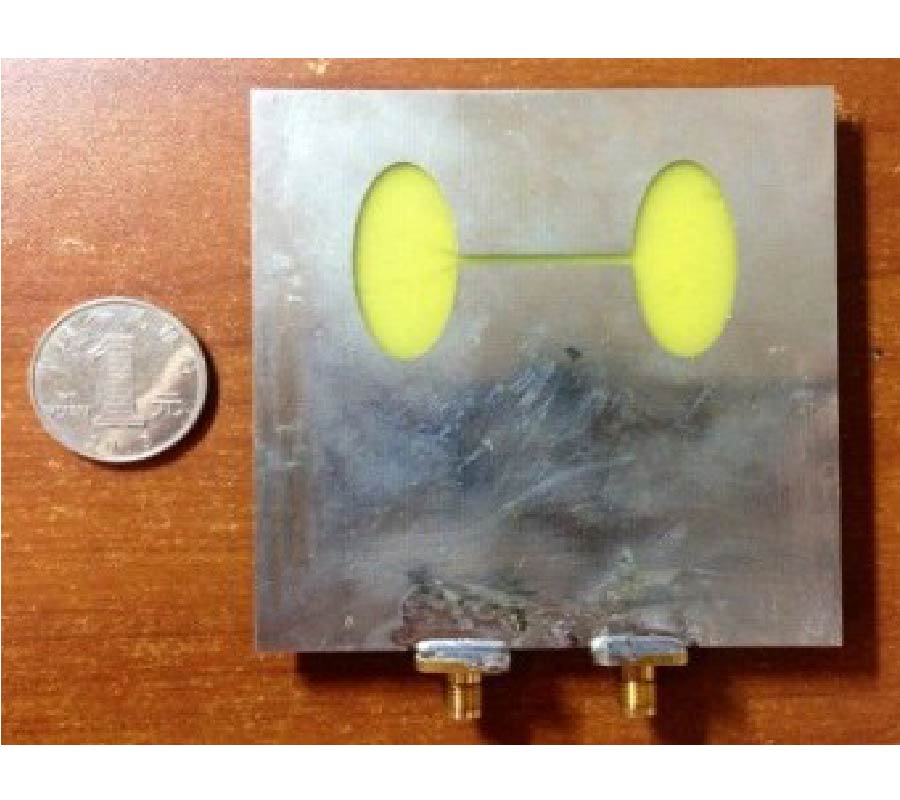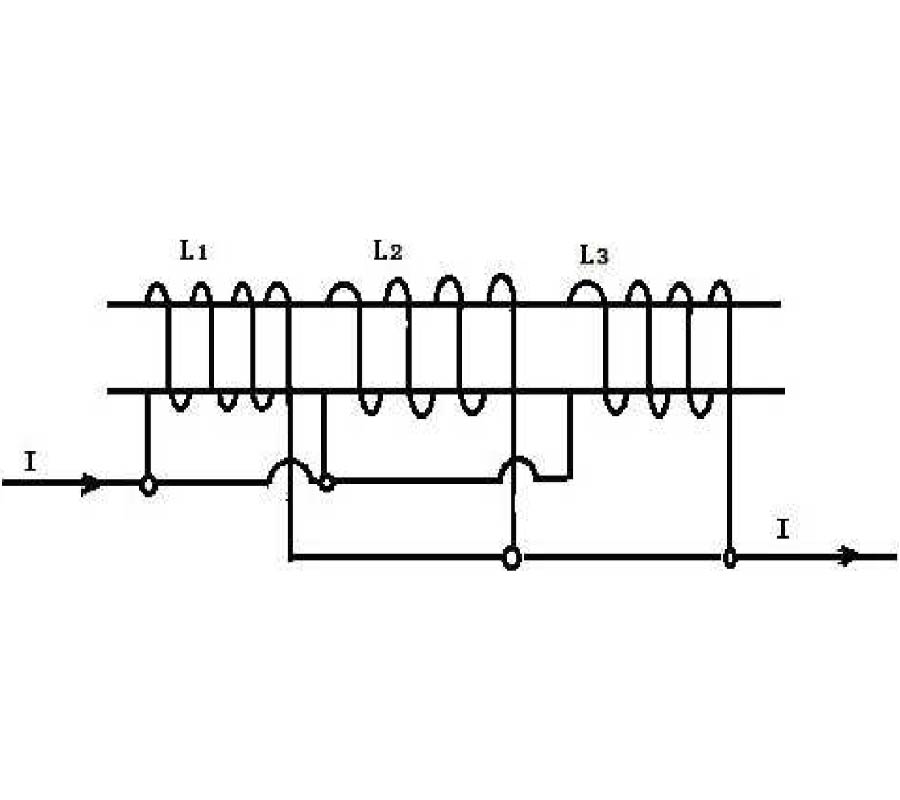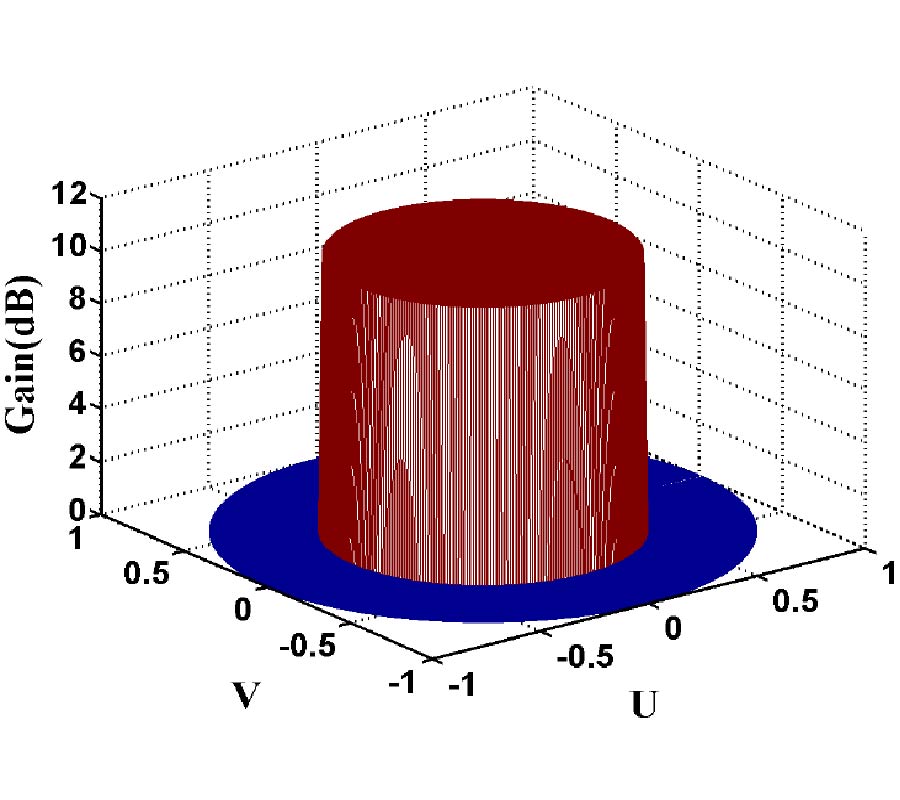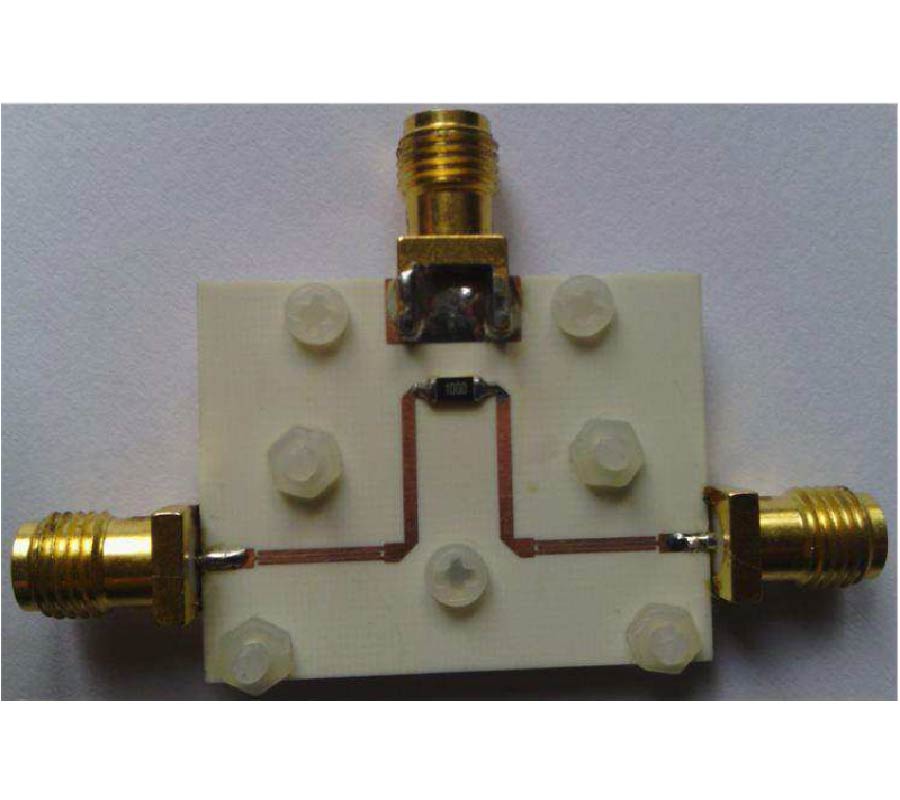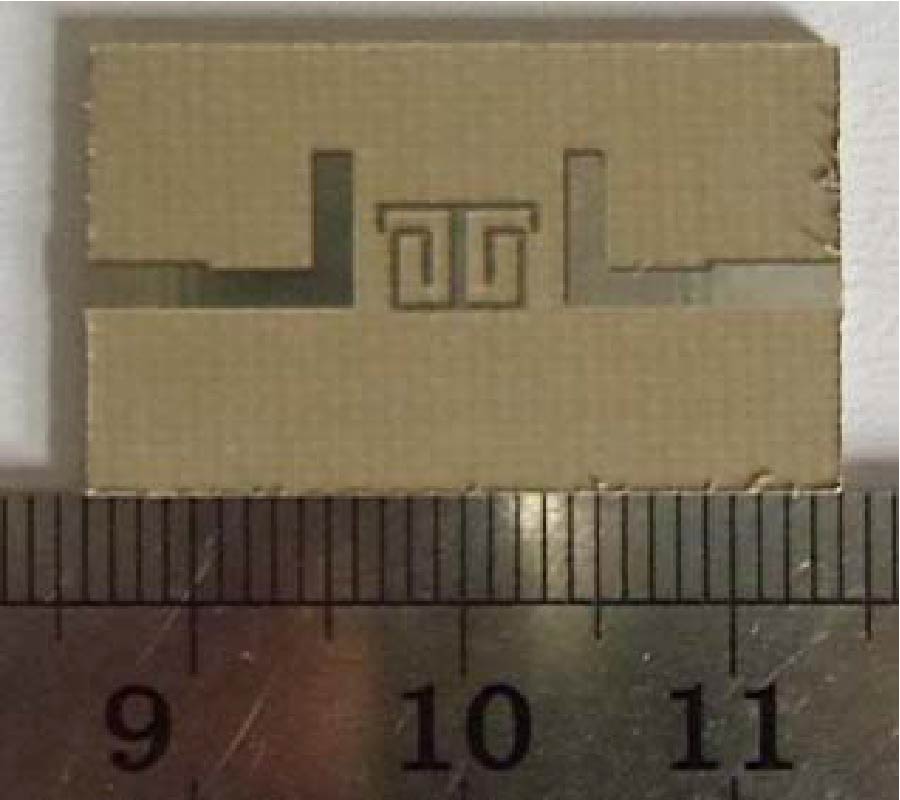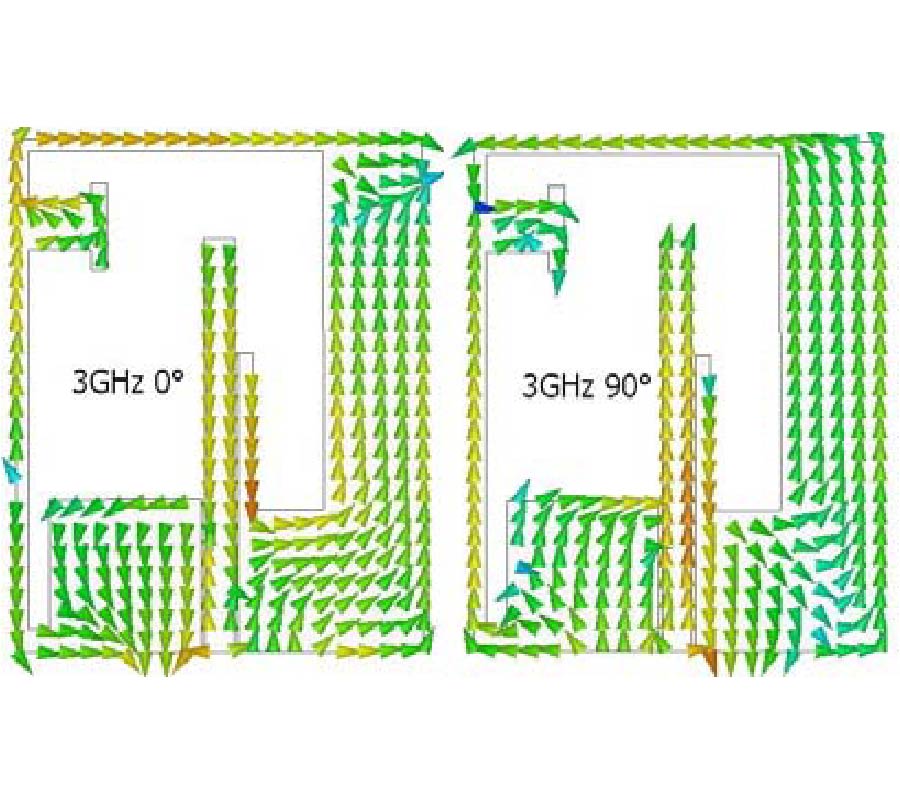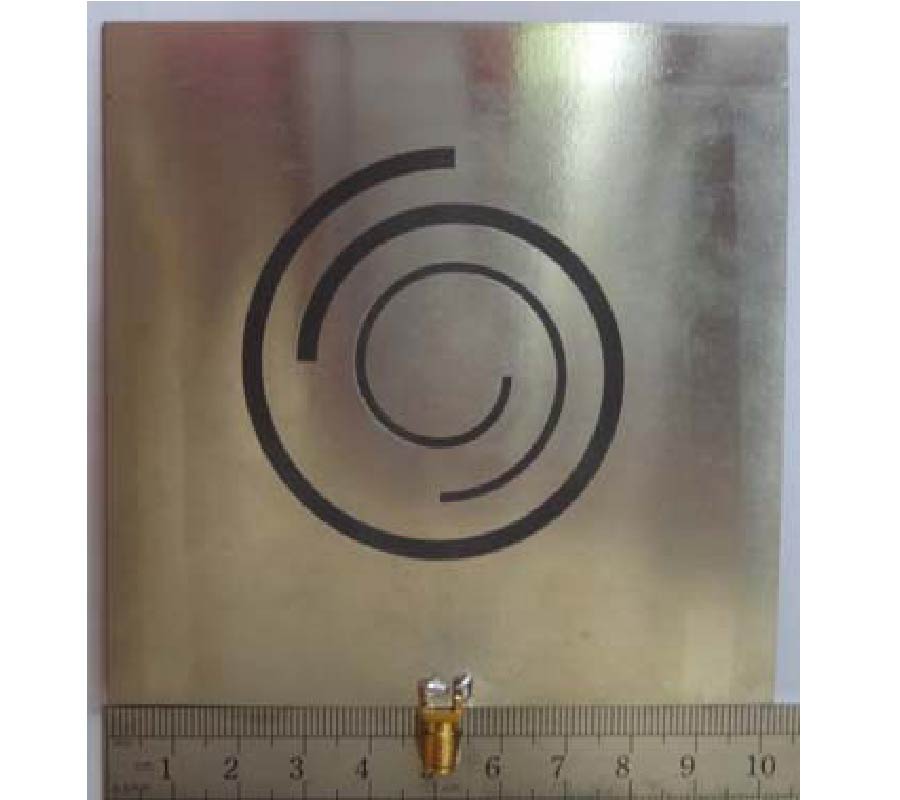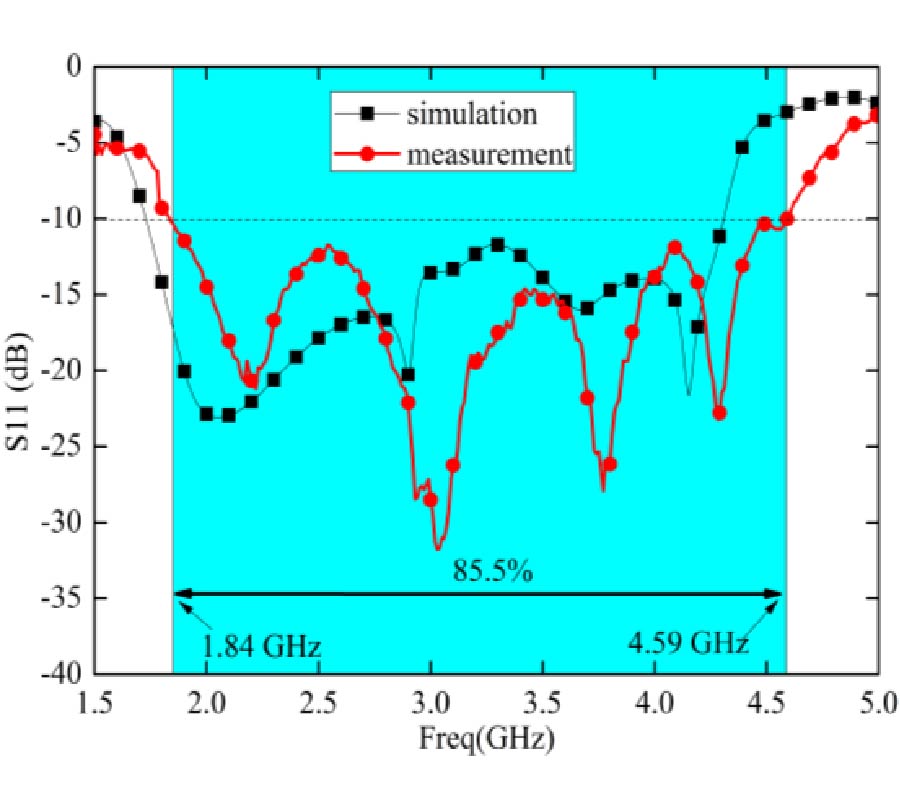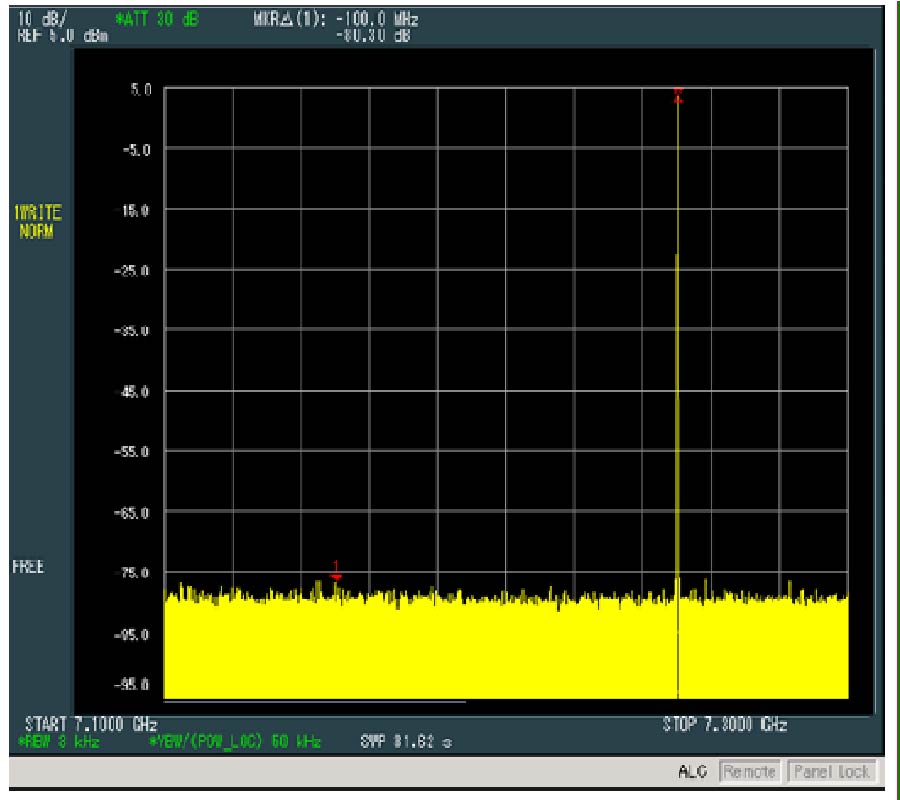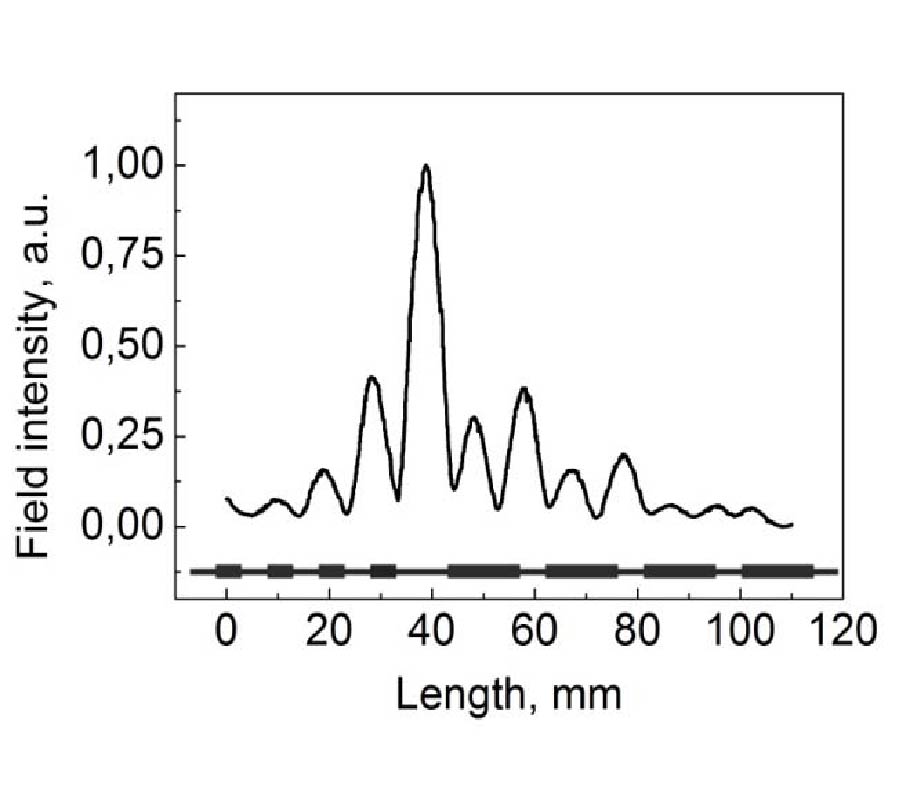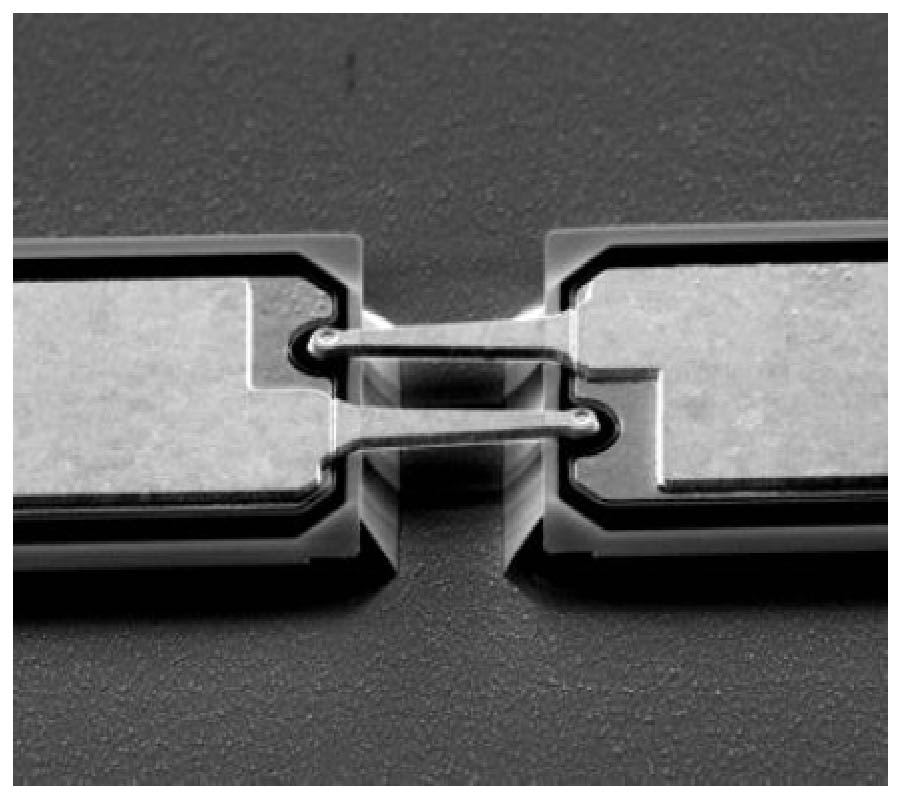Dual-Band Dual-Polarized Spiral Antenna for Chinese Compass Navigation Satellite System
Hangying Yuan,
Shaobo Qu,
Jieqiu Zhang,
Hang Zhou,
Jiafu Wang,
Hua Ma and
Zhuo Xu
In Chinese Compass Navigation Satellite System (CNSS for short), dual-band antennas are more attractive, because they can provide both navigation and communication services. In this paper, we present a dual-band dual-circular-polarized planar spiral-slot CNSS antenna. This antenna works at L Band (1616±5 MHz, left-handed circular polarization, LHCP) and S Band (2492±5 MHz, right-handed circular polarization, RHCP). Numerical results show that the impedance bandwidth (S11<-10 dB), 3 dB axial ratio bandwidth and antenna gain at L Band are about 242 MHz, 79 MHz and 4.92 dB, respectively, while the simulated impedance bandwidth (S11<-10 dB), 3dB axial ratio bandwidth and antenna gain at S Band are about 180 MHz, 58 MHz and 5.25 dB, respectively. An experiment was carried out to verify our design. Measured results show that impedance bandwidth (S11<-10 dB) and 3 dB axial ratio bandwidth L Band are about 300 MHz and 14 MHz, respectively, while the measured impedance bandwidth (S11<-10 dB) and 3 dB axial ratio bandwidth at S Band are about 210 MHz, 10 MHz, respectively. The measured results basically agree with the simulated ones and meet the requirement of CNSS terminal antennas.
